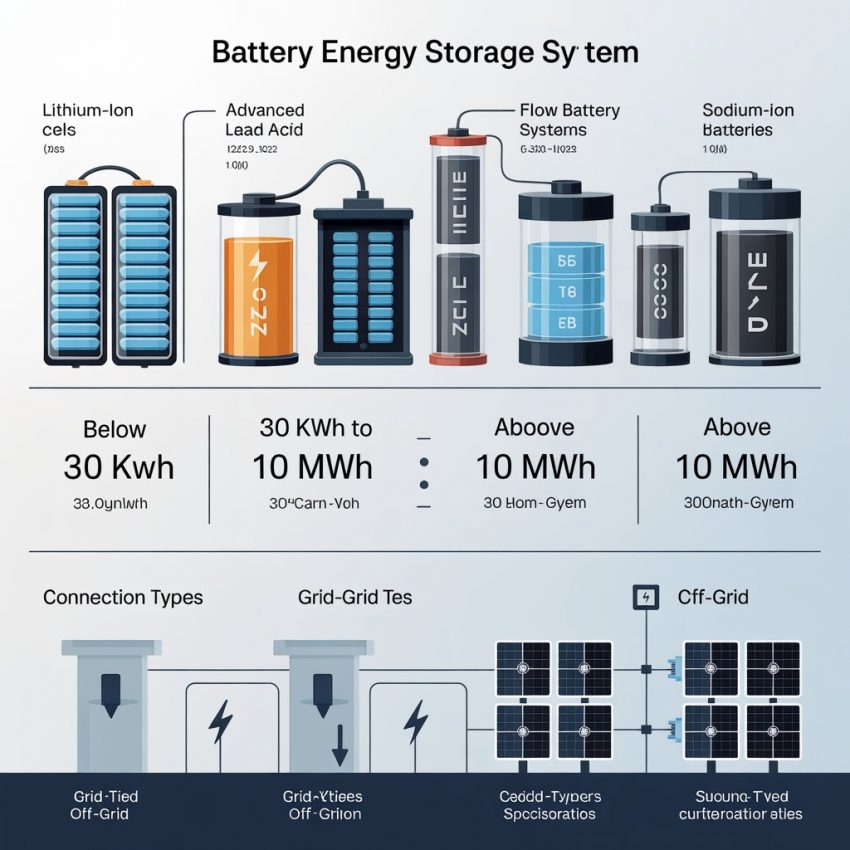The transformation of the global energy sector is driving utilities and developers to explore innovative business models that balance profitability with sustainability. Among the most promising technological enablers of this shift are battery energy storage systems (BESS), which have emerged as vital tools in managing grid stability, optimizing renewable energy use, and creating new sources of revenue. As energy markets evolve toward decentralization and decarbonization, BESS solutions are unlocking economic opportunities that extend far beyond traditional power generation and distribution.
The Growing Economic Significance of Energy Storage
The demand for reliable, clean, and flexible energy systems has fueled massive investments in battery storage technologies. Utilities and developers are now recognizing the financial advantages of deploying large-scale BESS as part of their infrastructure portfolios. The ability of these systems to store surplus electricity during low-demand periods and discharge it during peak hours allows energy providers to maximize asset utilization, stabilize prices, and improve profitability. Furthermore, energy storage supports grid resilience and enables participation in emerging markets for energy trading and ancillary services, creating a diverse range of income opportunities.
Download PDF Brochure @ https://www.marketsandmarkets.com/pdfdownloadNew.asp?id=112809494
Energy Arbitrage and Peak Shaving: Foundational Revenue Models
One of the most direct ways battery energy storage generates revenue is through energy arbitrage — buying electricity when prices are low and selling it back to the grid when prices surge. This capability allows utilities and independent power producers to capture value from market fluctuations, particularly in deregulated electricity markets. Similarly, peak shaving applications enable businesses and utilities to reduce their demand charges by supplying stored energy during high-consumption periods. These operational efficiencies not only lower costs but also extend the lifespan of grid assets, reducing the need for costly infrastructure upgrades.
Frequency Regulation and Grid Services
Battery energy storage systems are essential in providing frequency regulation and other ancillary services that maintain grid stability. With the increasing integration of intermittent renewable energy sources such as wind and solar, grid operators rely on fast-response systems to balance frequency deviations. BESS can deliver these responses in milliseconds, ensuring system reliability and preventing blackouts. Utilities that provide these grid-balancing services can earn consistent revenues through contracts with transmission system operators and capacity markets, positioning energy storage as a high-value asset in modern power networks.
Inquiry Before Buying @ https://www.marketsandmarkets.com/Enquiry_Before_BuyingNew.asp?id=112809494
Renewable Integration and Curtailment Reduction
Renewable energy projects often face challenges related to curtailment, where excess energy generated during peak production cannot be utilized or transmitted due to grid constraints. By coupling renewable generation with battery storage, developers can store this excess power and release it when demand rises, thereby increasing the overall utilization of renewable assets. This integration not only improves project economics but also enhances the return on investment for solar and wind developers. Additionally, hybrid renewable-storage projects can participate in multiple revenue streams simultaneously, such as capacity markets, ancillary services, and energy arbitrage, amplifying profitability.
Capacity Markets and Long-Term Contracts
Many regions are implementing capacity markets to ensure that sufficient power generation resources are available to meet future demand. In such frameworks, energy storage systems can secure long-term contracts for providing standby power or grid reliability support. For utilities and developers, participation in these markets offers predictable revenue streams over extended periods. Moreover, as policymakers increasingly recognize storage as a key enabler of grid reliability, new incentives and regulatory mechanisms are emerging to further enhance the financial viability of storage deployments.
Digitalization and Data-Driven Optimization
The integration of digital technologies, artificial intelligence, and advanced analytics into energy storage systems is revolutionizing operational efficiency. Intelligent control software allows utilities and developers to monitor battery performance in real time, optimize charging and discharging cycles, and forecast market trends for energy trading. This digital layer transforms storage systems from static infrastructure into dynamic financial assets capable of responding strategically to price signals. Data-driven optimization maximizes profitability while ensuring system longevity and operational reliability.
View detailed Table of Content here – https://www.marketsandmarkets.com/Market-Reports/battery-energy-storage-system-market-112809494.html
Supporting Decentralized Energy Markets
Battery storage is also enabling new business models based on distributed energy resources (DERs) and virtual power plants (VPPs). By aggregating multiple storage units across different locations, utilities and developers can create flexible, networked systems that act as a single, dispatchable resource. These virtual networks can participate in wholesale energy markets, sell balancing services, and support local grid operations, offering new opportunities for monetization. Such decentralized models also empower communities and consumers to engage directly in energy markets, fostering greater energy democratization.
The Road Ahead: A Profitable and Sustainable Future
As global energy systems transition toward decarbonization and digitalization, battery energy storage is set to play an increasingly central role in shaping new market dynamics. The convergence of declining battery costs, supportive regulations, and expanding renewable capacity is accelerating adoption worldwide. Utilities and developers that strategically deploy BESS are not only enhancing grid performance but also positioning themselves at the forefront of an evolving energy economy.

